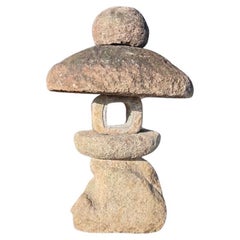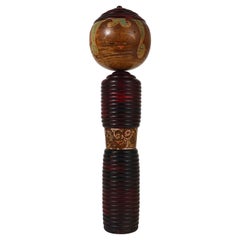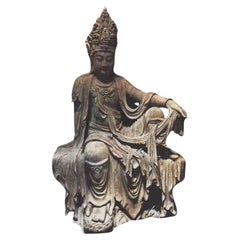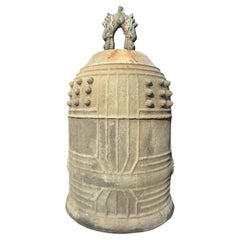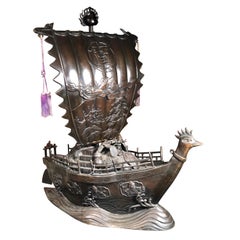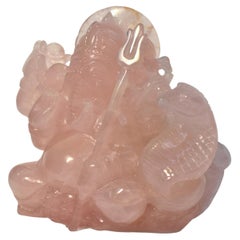Asian Sculptures and Carvings
Early 20th Century Taisho Asian Sculptures and Carvings
Stone
Early 20th Century Edo Asian Sculptures and Carvings
Wood
Late 19th Century Qing Antique Asian Sculptures and Carvings
Hardwood
Early 20th Century Taisho Asian Sculptures and Carvings
Bronze
Early 20th Century Taisho Asian Sculptures and Carvings
Bronze
Late 20th Century Asian Sculptures and Carvings
Rose Quartz
Early 20th Century Edo Asian Sculptures and Carvings
Wood
20th Century Showa Asian Sculptures and Carvings
Iron
1980s Showa Vintage Asian Sculptures and Carvings
Slate
20th Century Asian Sculptures and Carvings
Metal, Bronze
15th Century and Earlier Antique Asian Sculptures and Carvings
Stone
19th Century Meiji Antique Asian Sculptures and Carvings
Ceramic
Early 20th Century Asian Sculptures and Carvings
Agate, Rock Crystal
1970s Tribal Vintage Asian Sculptures and Carvings
Wood
Late 19th Century Primitive Antique Asian Sculptures and Carvings
Wood
Mid-20th Century Showa Asian Sculptures and Carvings
Wood
Mid-19th Century Tang Antique Asian Sculptures and Carvings
Wood
2010s Asian Sculptures and Carvings
Metal
Mid-20th Century Showa Asian Sculptures and Carvings
Wood
15th Century and Earlier Antique Asian Sculptures and Carvings
Sandstone
19th Century Qing Antique Asian Sculptures and Carvings
Wood
19th Century Meiji Antique Asian Sculptures and Carvings
Bronze, Gold, Sterling Silver, Copper
Late 19th Century Qing Antique Asian Sculptures and Carvings
Hardwood
Mid-20th Century Asian Sculptures and Carvings
Wood, Lacquer
Mid-20th Century Showa Asian Sculptures and Carvings
Stone
15th Century and Earlier Tang Antique Asian Sculptures and Carvings
Terracotta
17th Century Ming Antique Asian Sculptures and Carvings
Wood
20th Century Folk Art Asian Sculptures and Carvings
Hardwood
Early 20th Century Edo Asian Sculptures and Carvings
Wood
19th Century Antique Asian Sculptures and Carvings
Bronze
19th Century Other Antique Asian Sculptures and Carvings
Jade
20th Century Ming Asian Sculptures and Carvings
Bronze
Early 20th Century Chinoiserie Asian Sculptures and Carvings
Jade
Mid-20th Century Asian Sculptures and Carvings
Cork
Early 20th Century Meiji Asian Sculptures and Carvings
Granite
1890s Meiji Antique Asian Sculptures and Carvings
Bone
15th Century and Earlier Ming Antique Asian Sculptures and Carvings
Pottery
1920s Showa Vintage Asian Sculptures and Carvings
Textile, Hemp
Late 19th Century Anglo Raj Antique Asian Sculptures and Carvings
Metal
Early 20th Century Anglo-Indian Asian Sculptures and Carvings
Wood
15th Century and Earlier Other Antique Asian Sculptures and Carvings
Sandstone
Mid-20th Century Chinese Export Asian Sculptures and Carvings
Glass
19th Century Meiji Antique Asian Sculptures and Carvings
Limestone
Early 20th Century Asian Sculptures and Carvings
Bronze
Late 18th Century Edo Antique Asian Sculptures and Carvings
Sandstone
Late 19th Century Meiji Antique Asian Sculptures and Carvings
Cedar
Mid-20th Century Showa Asian Sculptures and Carvings
Bronze
Late 20th Century Mid-Century Modern Asian Sculptures and Carvings
Bronze
20th Century Showa Asian Sculptures and Carvings
Iron
18th Century Edo Antique Asian Sculptures and Carvings
Wood
18th Century Edo Antique Asian Sculptures and Carvings
Wood, Lacquer, Paint
Early 20th Century Edo Asian Sculptures and Carvings
Wood
20th Century Asian Sculptures and Carvings
Ceramic, Wood
20th Century Asian Sculptures and Carvings
Marble
20th Century Asian Sculptures and Carvings
Bronze
1890s Qing Antique Asian Sculptures and Carvings
Porcelain
Early 20th Century Showa Asian Sculptures and Carvings
Stone
15th Century and Earlier Antique Asian Sculptures and Carvings
Bronze
Late 20th Century Showa Asian Sculptures and Carvings
Wood
Late 19th Century Meiji Antique Asian Sculptures and Carvings
Iron
Read More
12 Calming Spaces Inspired by Japanese Design
From cherry-blossom-adorned walls paired with glamorous lighting to wood-paneled ceilings above checkerboard-patterned chairs, these 12 spaces seamlessly blend Eastern and Western aesthetics.
Rodrigo Rivero Lake’s Mexico City Showroom Is a Museum-Worthy Trove of Spanish Colonial and Asian Antiques
The dealer and curator has spent the past 50 years amassing a collection of exceptional art, furniture and architectural elements that trace the cultural influence of the Spanish empire from Europe to the Americas and beyond.
